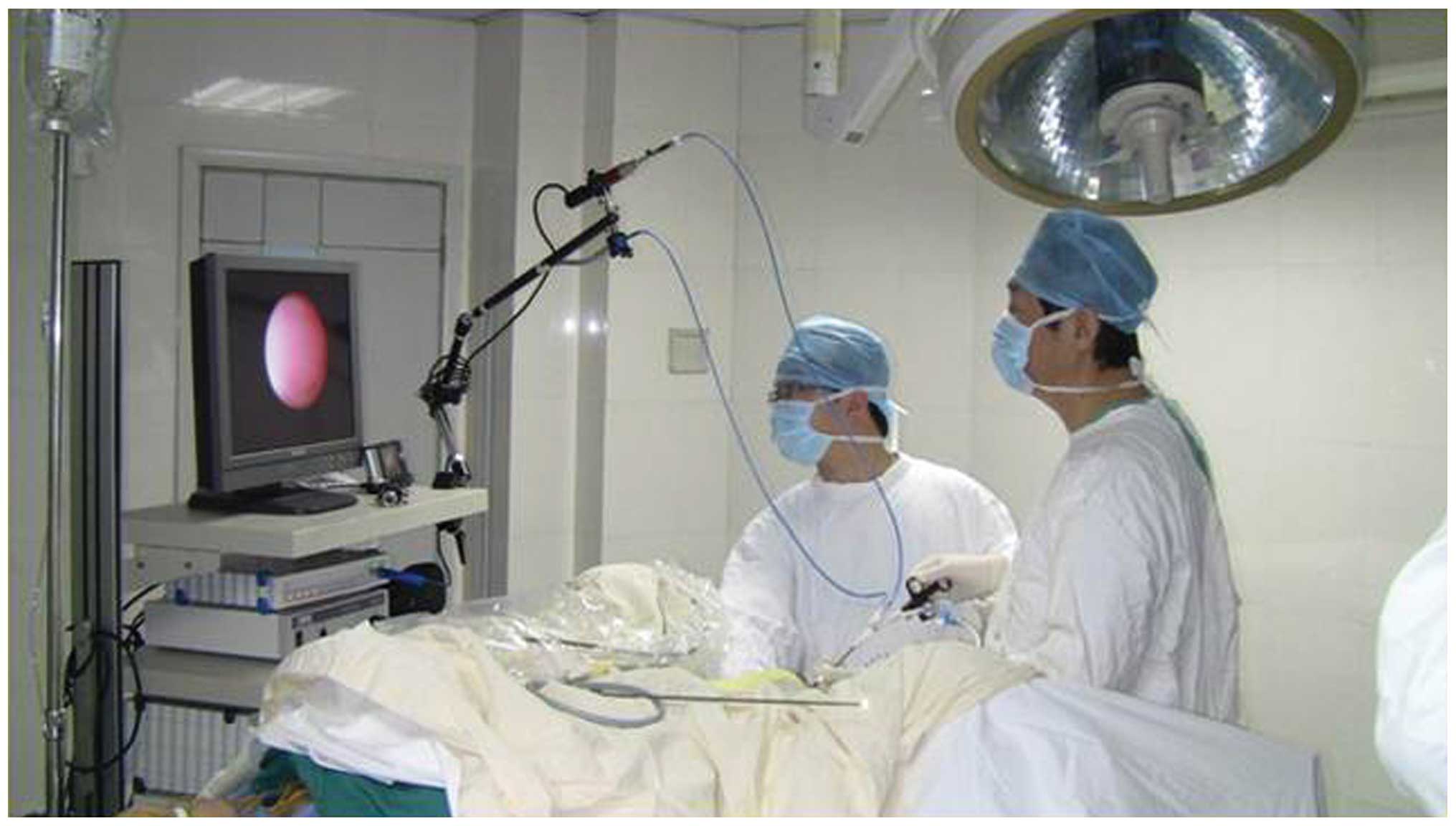Modular flexible ureteroscopy and holmium laser lithotripsy for the treatment of renal and proximal ureteral calculi: A single-surgeon experience of 382 cases
- Authors:
- Published online on: August 24, 2015 https://doi.org/10.3892/etm.2015.2703
- Pages: 1467-1471
Metrics:
Total
Views: 0 (Spandidos Publications: | PMC Statistics:
)
Total PDF Downloads: 0 (Spandidos Publications: | PMC Statistics:
)
Abstract
To determine the safety and efficacy of modular flexible ureteroscopy and holmium laser lithotripsy for the treatment of renal and proximal ureteral calculi, a retrospective chart review of a single surgeon's 3‑year modular flexible ureteroscopy experience was performed. All of the patients were treated with modular flexible ureteroscopy and holmium laser lithotripsy by a single surgeon. Stone‑free status was defined as no fragments or a single fragment ≤4 mm in diameter at the 3‑month follow‑up. The procedure number, operative time, stone‑free rates, repeat usage of the multilumen catheter, and perioperative complications were documented. The present study included 215 male patients and 167 female patients, with an average age of 48.5±13.7 years (range, 17‑84 years). The mean stone size was 11.5±4.1 mm (range, 4‑28 mm), and the mean total stone burden was 17.5±5.7 mm (range 15‑46 mm).
A total of 305 patients (79.8%) had a stone burden ≤20 mm, and 77 patients (20.2%) had a stone burden >20 mm. The mean number of primary procedures was 1.3±0.2 (range, 1‑3). The stone‑free rate following the first and the second procedure was 73.4 and 86.9%, respectively. The mean postoperative hospital stay was 3.1±1.2 days (range, 2‑6 days). The highest clearance rates were observed for proximal ureteral stones (100%) and renal pelvic stones (88.7%), whereas the lowest clearance rates were observed for lower calyx stones (76.7%) and multiple calyx stones (77.8%). The higher the initial stone burden, the lower the postoperative stone‑free rate (≤20 vs. >20 mm; 89.8 vs. 75.3%). The overall complication rate was 8.1%. The results of the present study suggest that modular flexible ureteroscopy with holmium laser lithotripsy may be considered the primary method for the treatment of renal and proximal ureteral calculi in select patients, due to its acceptable efficacy, low morbidity, and relatively low maintenance costs.












